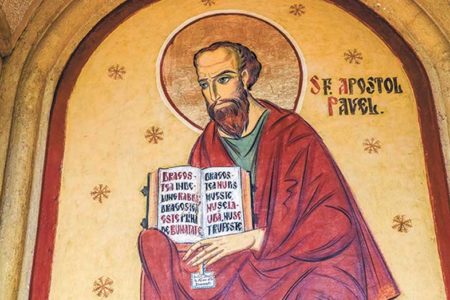It is the week after the 2017 Synod. Once again we were reminded in a number of reports and speeches from the floor that the Church is on a journey. We are a pilgrim people, ‘always on the way’.
The theme of the church as a pilgrim people emerged strongly in the early decades of the Christian movement.
Paul wrote to a bunch of Gentiles in the busy city of Corinth, who had never set foot in anything resembling a wilderness, and told them that the story of Moses and the people wandering towards the promised land is their story.
Moses, the pillar of cloud, the sea crossing, the gift of manna, the temptation to idolatry “these things happened and were written down to instruct us”, Paul wrote (1 Corinthians 10:1–13).
But the place where the theme is most strongly developed is in the erudite and highly distinctive text we usually call ‘The Letter to the Hebrews’.
Hebrews is really a sermon on the theme of pilgrimage, a ‘word of exhortation’ for a people on the way. It is full of spatial terms such as ‘place’, ‘land/region/country’, ‘foreign, ‘homeland’, ‘city’, along with verbs of motion like ‘departing/travelling’ and ‘returning’.
The church is described in Hebrews in ways that shaped the formation of the UCA and continue to influence the decisions and commitments that we make as a Synod: as a wandering people, progressing on a journey in response to God’s command, and looking forward in hope to God’s promised rest.
In the words of the Basis of Union, the Church is “a pilgrim people; always on the way towards a promised goal; here she does not have a continuing city but seeks one to come. On the way Christ feeds her with Word and Sacraments, and she has the gift of the Spirit in order that she may not lose the way”.
This reminds us that there is no definitive version of the Church’s institutional life or earthly achievement. It also points us to the need for ongoing education and formation as we discern the way ahead, and receive the sustenance of Christ and the guidance of the Spirit.
Hebrews was probably written to provide education and formation for the early Christian movement. And within its often tortuous and perplexing argument there emerges several key emphases that remind us of the need to continue the work of understanding God’s command and promise.
First, the writer of Hebrews encourages the wandering people of God by keeping their focus on Jesus’ identity, incarnation, life, suffering, death, resurrection and enthronement. The aim is to strengthen and deepen the church’s confession in Jesus Christ as the Son of God.
In the same way, theological education for a pilgrim church will consistently explore the narrative of God’s journey into the full reality of this world in Jesus Christ.
Second, the key resource for telling that story is Scripture. Hebrews is a tricky text to interpret, not least because it is ‘impregnated with the OT’. Wrestling with these scriptural texts is necessary because, through the effort of exegesis, the word of God becomes ‘alive and effective’ (4:12) for the people of God on their journey.
Similarly, theological education for a pilgrim church provides ongoing opportunity to understand, interpret and live out the vision of Old and New Testaments.
Third, Hebrews is not afraid to affirm and make use of the full range of human learning. This is theology in the hands of someone who places all of their intellectual capacity and educational attainment in service of articulating the Christian faith.
Theological education for a pilgrim people also affirms the value of intellectual and scholarly enquiry, because these gifts are to be pressed into service for the sake of understanding and articulating the gospel to the very best of our ability.
Fourth, Hebrews is a highly creative piece of theology. The writer draws on the broad and developing tradition of the early Christian movement, but shapes and adapts that tradition so it is able to speak to the present moment and the real on-the-ground experiences of the church for whom they write.
In the same way, theological education for a pilgrim people will always take the life and experience of the pilgrim seriously. We should resist the temptation to speak the faith solely in language borrowed from elsewhere or from back then: theology is not ventriloquism. But neither are we the first generation to ask our questions, work through the challenges, or attempt to speak the gospel faithfully.
Even in the midst of the demands of the present context, theological work is also done in the context of a great cloud of witnesses (Heb 12:1).
Finally, we should note that the depth and complexity of the theology at work in Hebrews are not ends in themselves. For a text so taken up with abstract and speculative modes of theological reflection, it is striking to note the ways in which the author envisages the practical consequences of that theology.
Mutual love, hospitality to strangers, identification with the prisoner, upholding marriage, resisting greed, support for leaders (13:1–17); these are just some of the ways that the vision of Hebrews translates into action.
Those who call transformation or new understandings of the church, or of the church’s mission in the world, will recognise that theological education is central to that process.
In essence, then, a church that commits itself to theological education at all levels of its life is telling itself and the world that it is a community ‘always on the way’. The work of education, whether in a church Bible study or a theological college classroom, is a tangible, visible, intentional, and institutional expression of the church’s commitment to its own journey.
This is an abbreviated version of a longer and more technical article published in the journal Pacifica in 2015. A copy of the full article can be supplied on request to [email protected]





